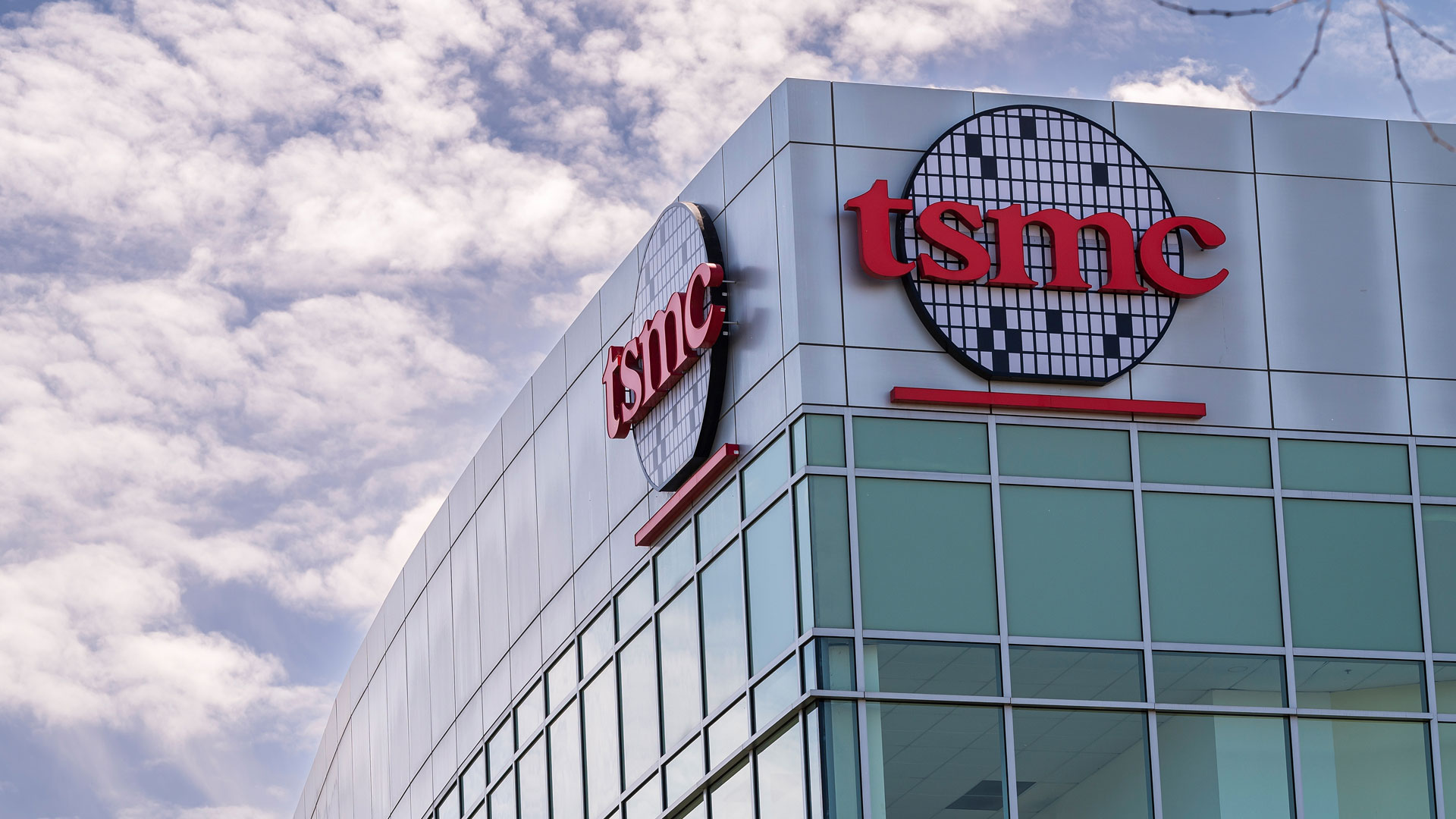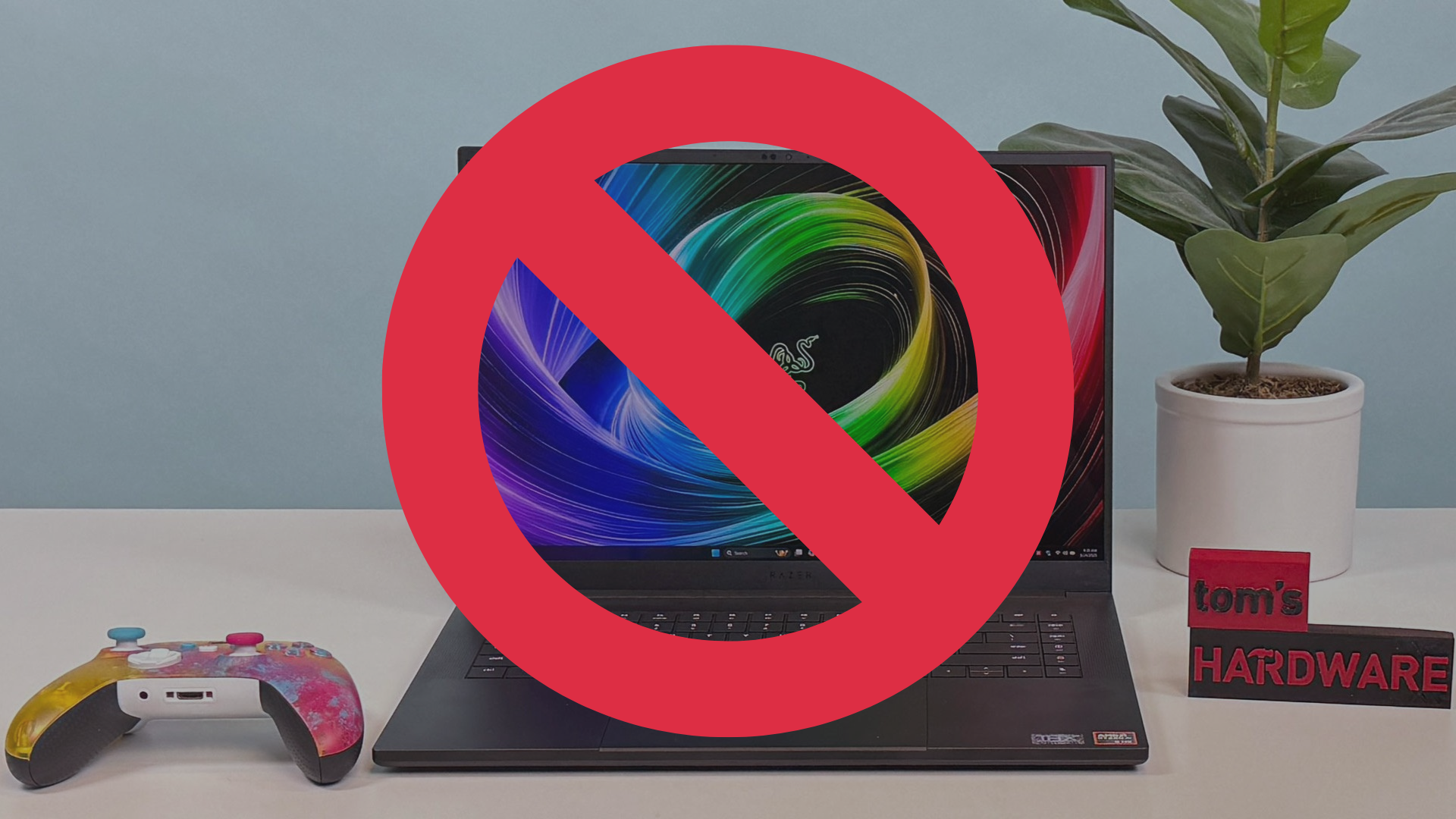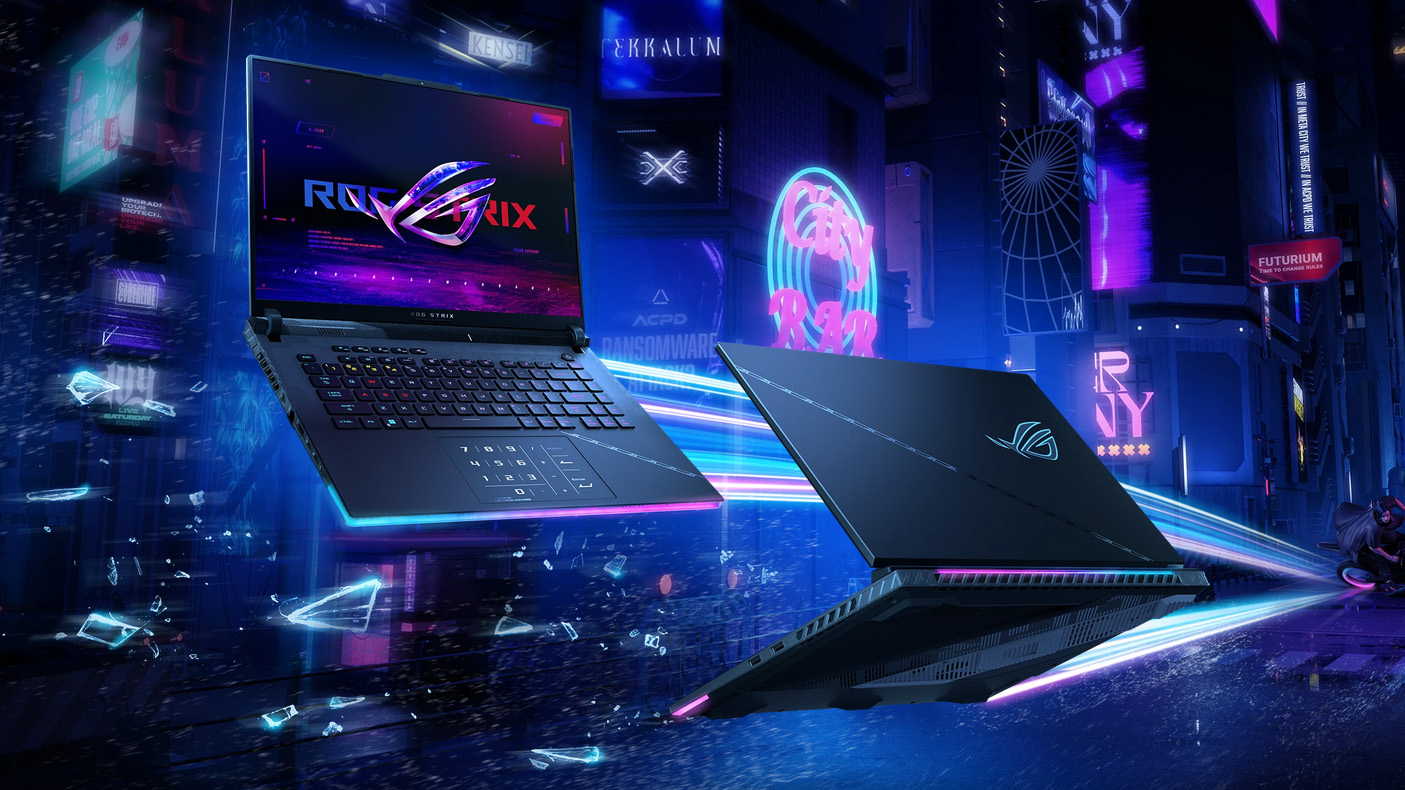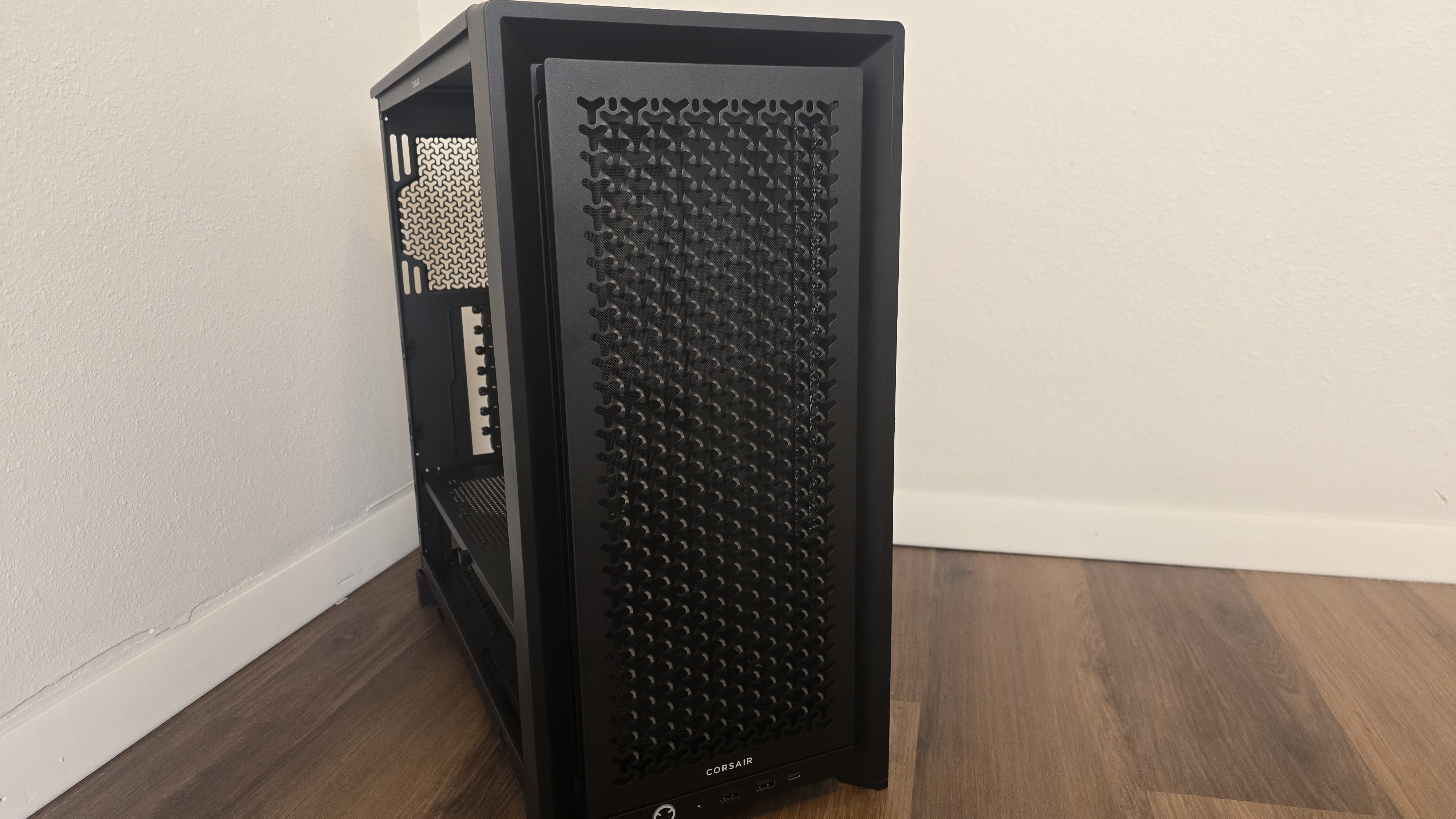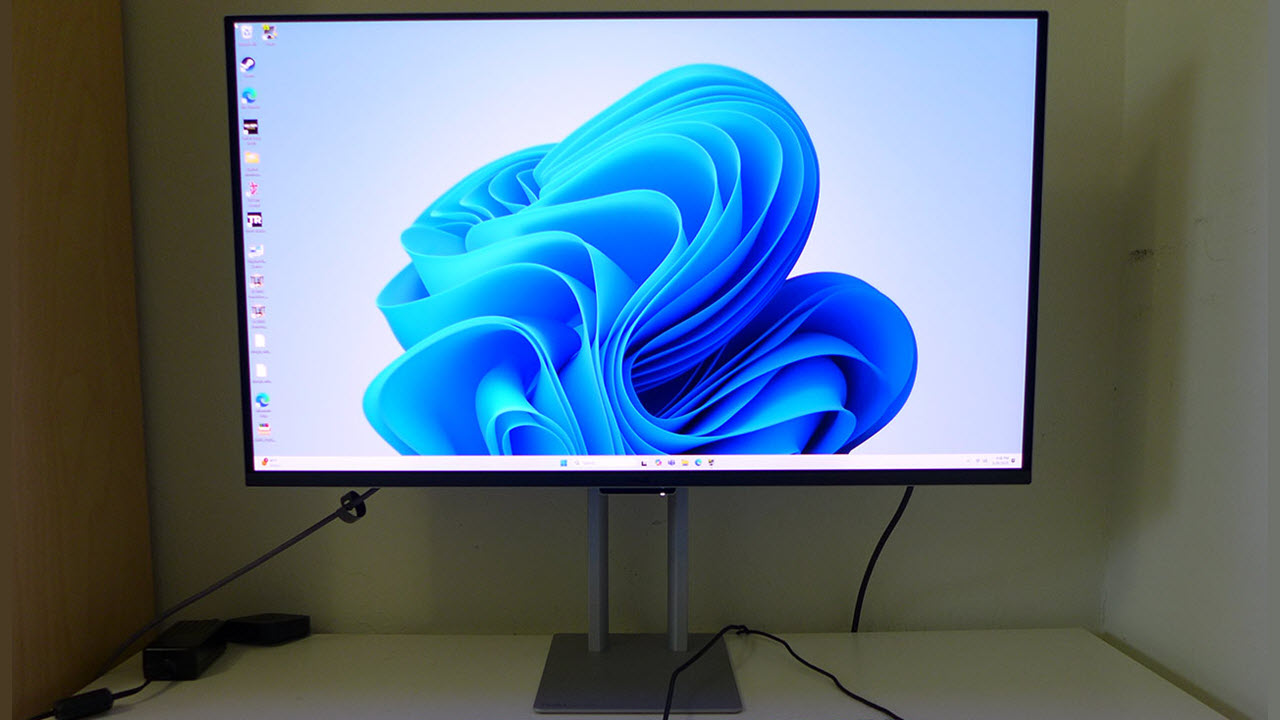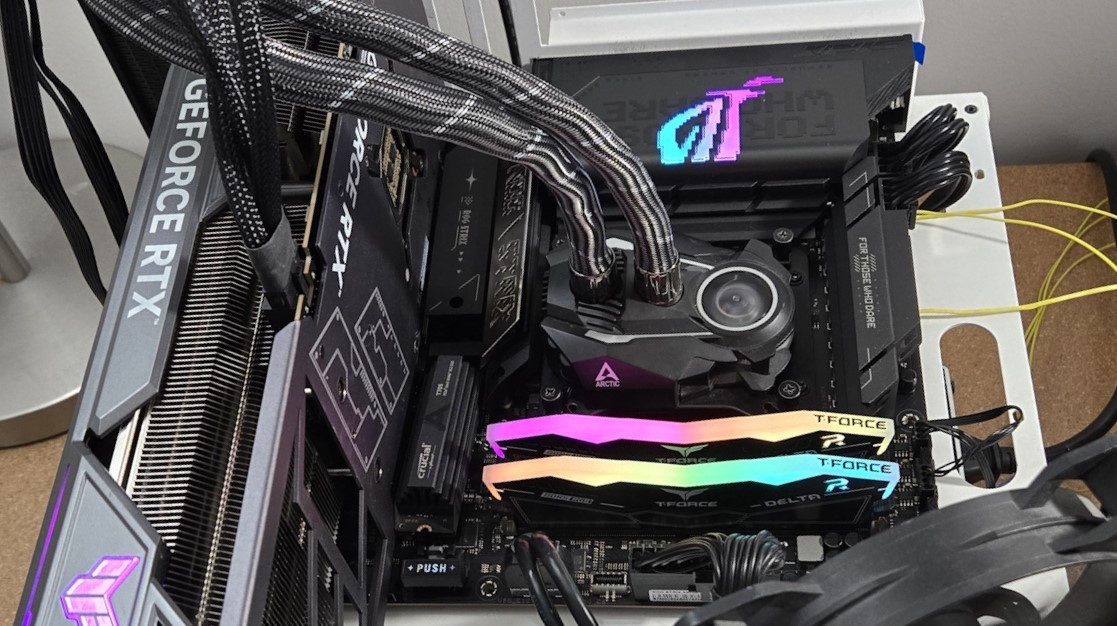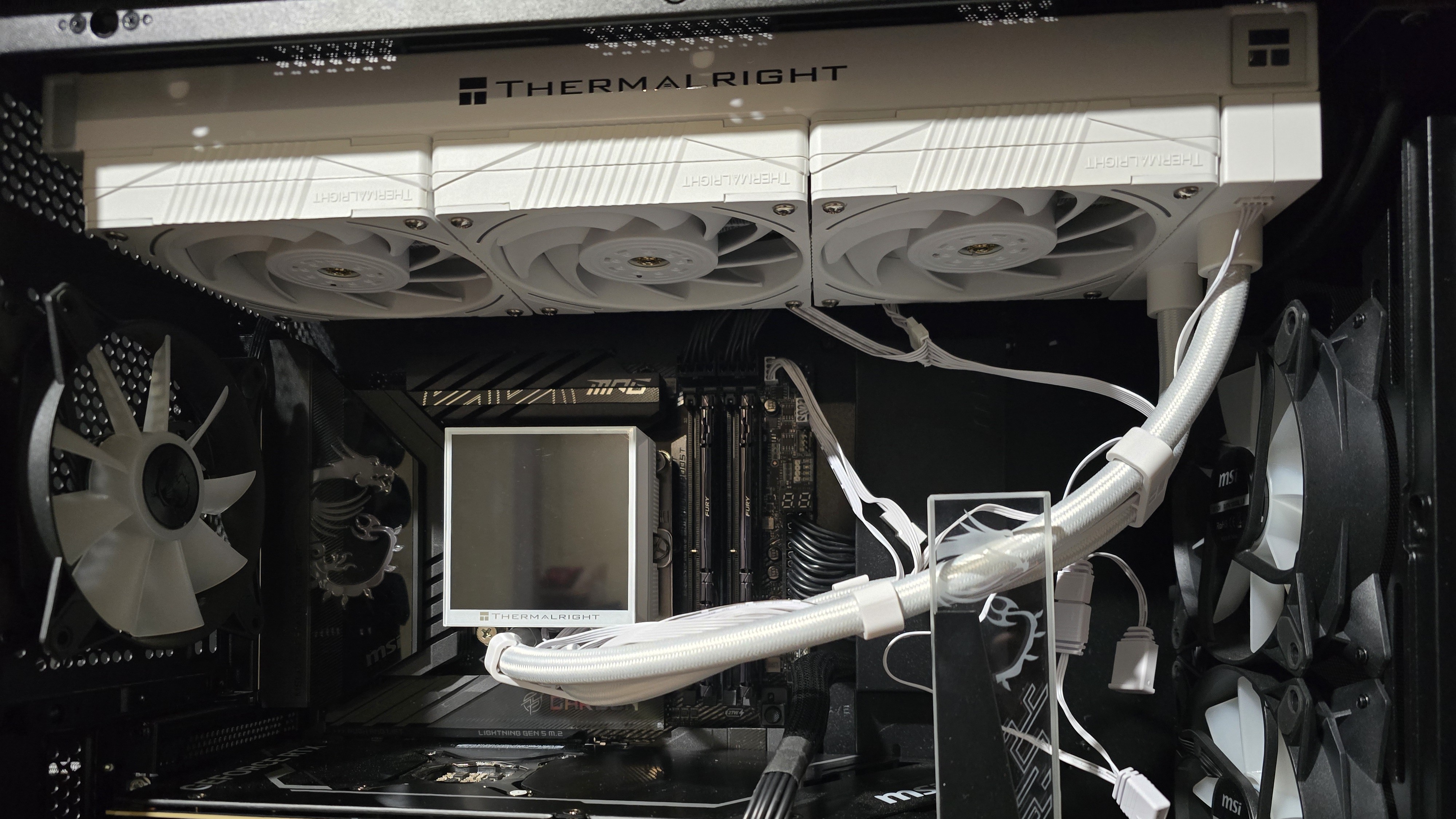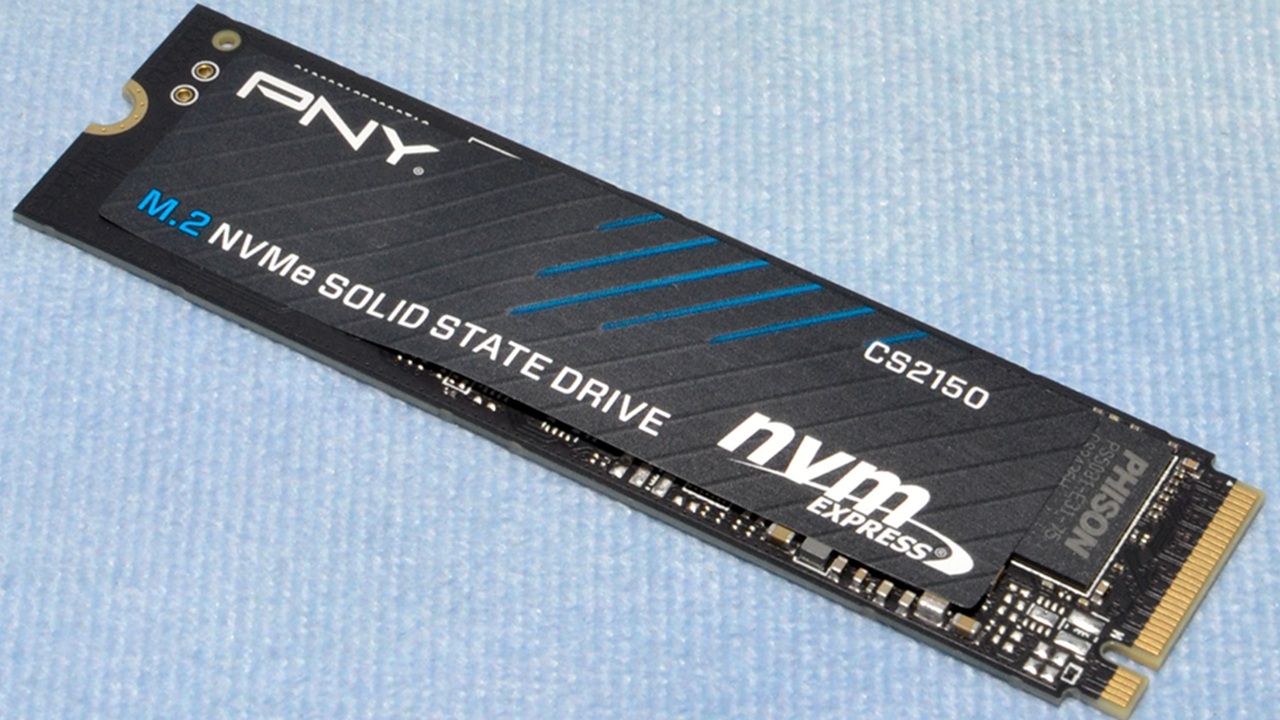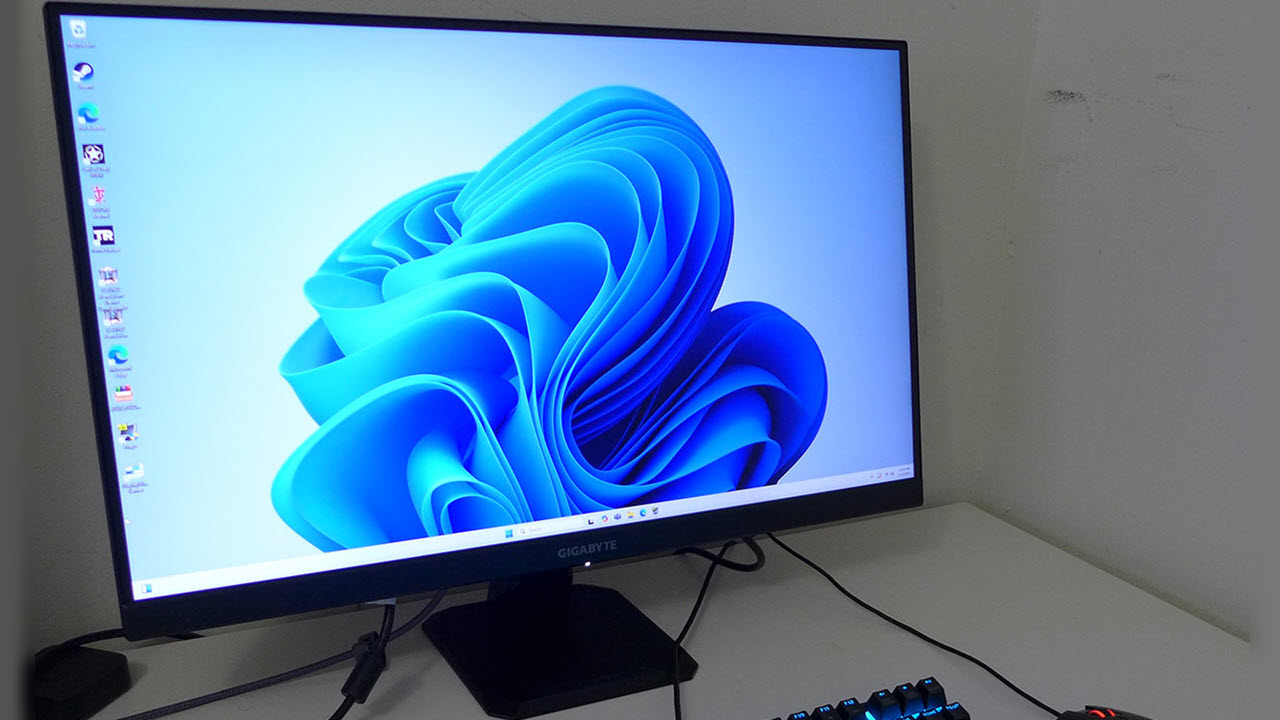LG G3 Smartphone Review: A Plethora Of Pixels And A Laser!
The LG G3 combines cutting-edge hardware, including a 5.5-inch WQHD screen and laser autofocus system, with a lightweight body and slim bezels to create a phone that was ahead of its time. Is it still worth your consideration? Read on for our impressions.
Why you can trust Tom's Hardware
Results: GPU Core Benchmarks
3DMark (Anti-Detection)
Futuremark has become a name synonymous with benchmarking, and the company's latest iteration of 3DMark offers three main graphical benchmarks: Ice Storm, Cloud Gate and Fire Strike. Currently, the DirectX 9-level Ice Storm tests are cross-platform for Windows, Windows RT, Android and iOS.
Ice Storm simulates the demands of OpenGL ES 2.0 games using shaders, particles and physics via the company's in-house engine. Although it was just released in May of 2013, the on-screen portions of Ice Storm have already been outpaced by modern mobile chipsets, with Nvidia's Tegra 4 and Qualcomm's Snapdragon 800 both easily maxing-out the Extreme version (1080p with high-quality textures). However, Ice Storm Unlimited, which renders the scene off-screen at 720p, is still a good gauge of GPU-to-GPU performance.
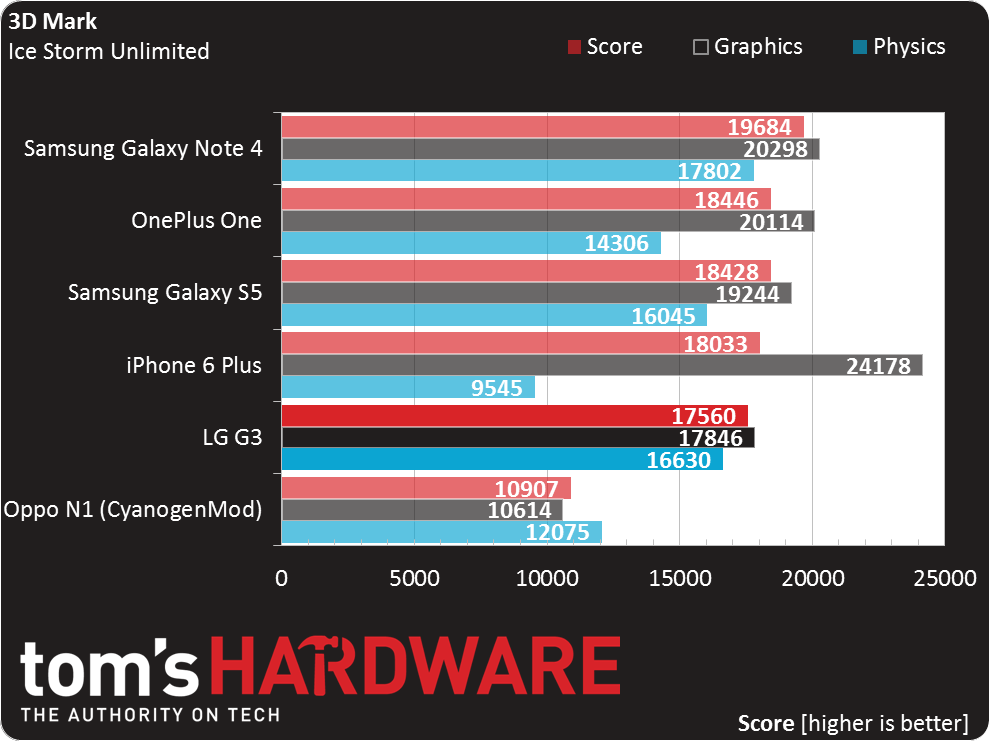
The overall score shows only a 5% difference between the OnePlus One and the G3, with the former holding a 13% advantage in the Graphics test. In the CPU-focused Physics test, the G3 flips the results with a 16% performance edge over the One. The Adreno 420 in the Note 4 isn’t much faster than the One in the Graphics test and is only 14% faster than the G3.
Basemark X 1.1
Based on the Unity 4.0 game engine, Rightware’s Basemark X is a cross-platform graphics benchmark for Android, iOS and Windows Phone 8. This test utilizes Unity’s modern features via the OpenGL ES 2.0 render path to simulate how a modern game might look and run. Basemark X is an aggressive metric that still hasn’t been maxed out by the latest mobile SoCs.



The on-screen results for the iPhone 6 Plus are not accurate, since the current version of this benchmark doesn’t support its native resolution. Instead, it renders at the native resolution of the 5s (640x1136). The Overall scores are not affected by this issue though, since they are based on the off-screen rendering tests.
All of the Adreno 330-equipped devices fall within 8% of each other when looking at the overall score, with the OnePlus One showing a slight edge. The Adreno 420 GPU in the Note 4 scores no better than the G3 in this test.
The G3 falls behind the competition in the on-screen module. Its Adreno 330 GPU struggles with the higher-resolution WQHD display. The Adreno 420 in the Note 4 handles the WQHD resolution a little better, but fails to match the Adreno 330's performance at 1080p.
The G3 performs as expected in the off-screen tests and even manages to outperform the Note 4 in Hangar.



The high-quality overall test shows the G3 and the the other two Adreno 330-based devices grouped together with only a 9% spread. In the off-screen tests, the G3 lands between the Galaxy S5 and the OnePlus One.
GFXBench 3.0 Corporate
Kishonti GFXBench 3.0 is a cross-platform GPU benchmark supporting both the OpenGL ES 2.0 and OpenGL ES 3.0 APIs. It comprises both “high-level” game-like scenarios, along with more “low-level” tests designed to measure specific subsystems.
Among the high-level tests are Manhattan and T-Rex. Manhattan is a modern, complex OpenGL ES 3.0-based test, while the OpenGL ES 2.0-level T-Rex is a holdover from GFXBench v2.7.
The low-level tests include Fill, which measures fill rate by rendering four layers of compressed textures; Alpha Blending, a test that renders layers of semi-transparent quads using high-resolution, uncompressed textures; ALU, for measuring shader compute performance; and Driver Overhead, which measures the CPU overhead of the graphics driver and API by making a lot of draw calls and state changes.
See GFXBench 3.0: A Fresh Look At Mobile Benchmarking for a complete test-by-test breakdown of this benchmark.


The Manhattan off-screen results line up perfectly by SoC family, with identical scores for our three Snapdragon 801-based devices. The G3 offers 2.4x the performance of the Snapdragon 600 in the Oppo N1, while the 805 in the Note 4 offers 1.5x better performance than the G3.
As expected, the G3 encounters a significant drop in performance when running Manhattan on-screen. The G3 is about 42% slower than the OnePlus One, which makes sense since the One has about 44% fewer pixels to render at its HD resolution. The Note 4, which has the same WQHD resolution as the G3, also sees a 39% drop in performance when rendering at WQHD versus HD resolution.


T-Rex Offscreen again shows the three Snapdragon 801 devices in a virtual tie. The Note 4 doesn’t fare well due to excessive thermal throttling in this test. The G3 offers 1.8x the performance of the Snapdragon 600 in the Oppo N1.
When rendering on-screen, the G3 drops 25%, a less significant hit compared to the more demanding Manhattan test. In a weird twist, the Note 4 actually scores better when rendering at the higher onscreen resolution.









AndEBench Pro already showed the OnePlus One with a slight advantage over the G3 and Galaxy S5 in both memory bandwidth and memory latency. It should be no surprise, then, that the One shows a 15% advantage over the G3 in the off-screen Alpha Blending test, which fetches high-resolution, uncompressed textures from memory. All of the other low-level tests show the G3 with near identical performance to the other Snapdragon 801 phones.
Overall, the LG G3 performs on par with other flagship phones based on Snapdragon 801. Unlike those other phones that use HD screens, however, the G3’s 801 has far more pixels to deal with. This leads to a rather poor experience for any games that render at native screen resolution. Fortunately, most games render to a smaller off-screen buffer and use the hardware scaler in the SoC to scale each frame to native screen size, so game performance issues should be rare.
Current page: Results: GPU Core Benchmarks
Prev Page Results: HTML5 And JavaScript Benchmarks Next Page Results: GPGPU BenchmarksStay On the Cutting Edge: Get the Tom's Hardware Newsletter
Get Tom's Hardware's best news and in-depth reviews, straight to your inbox.
-
Vorador2 At this point, i wouldn't bother. Rumors have surfaced than a successor will be launched in March.Reply
Tom's, you're almost at the point of self-parody. I would rename the site to "The Slowest Authority on Tech" -
wtfxxxgp For once I must agree that THW has dropped the ball on a very important phone review - it was too late - and the "better late than never" gesture never applies to a Review of something. My sister has just purchased this phone a week ago, had I had sight of a THW review then I'm sure I could have convinced her to rather wait for the next model that would surely have better support for that gorgeous screen - I played with it, it really is amazing watching video on that thing.Reply -
zodiacfml It's quite late and learned little except the voice activated shutter feature. Most of the information are subjective and benchmarks are quite of little use since the database is quite few.Reply
Tom's, here is a suggestion. Since you're good with gaming benchmarks, why not just make reviews of smartphones as portable gaming machines? There's plenty of information to be gathered from such and plenty of debates/discussion could be created just from that.
Build a database of old games and phones to be compared to new devices. Higher benchmark numbers encourages upgrades (*wink*). -
Cryio Absolutely no Lumia in the photo shoot comparison? I thought. A Lumia 1020 or Lumia 930 with Denim should have photo sampling comparisons in the next list. Also an iPhone 6+.Reply -
bujcri Suprised not to be mentioned about LG's Lollipop update for LG G3. At least worth mentioning that this update pretty much ruined some funtions on G3 like silent mode (now DND) and brought a lot of useless notifications on lockscreen like for example whatever you wanna have permanently on the notification bar (I used to have the date there). In a nutshell I really hate Lollipop.Reply -
kiniku I sold this phone on Ebay and bought a Sony Xperia Z3. I went from 8-10 hours of battery life to 48+, brighter screen, water resistant, and amazing sound.Reply -
glasssplinter I had to look at this article several times to confirm that you really just published this. New phone models are just around the corner and you're barely pushing this article out. Why did you feel the need to compare so many features to crapple tech also? The whole reason I'm interested in the phone is because it isn't crapple so people don't care how it stacks up. We want to know how it compares to other android phones. It's like putting the newest icrap review out and then saying but the icrap 10 still doesn't have a removable battery but this android and windows phone does in some hope of swaying them. Tom's has hit new lows...you would have been better off just not publishing this.Reply -
MobileEditor ReplyMan! I can't wait for the new Samsung Galaxy S4 review!
Don't buy it. Review done :)
- Matt H.
